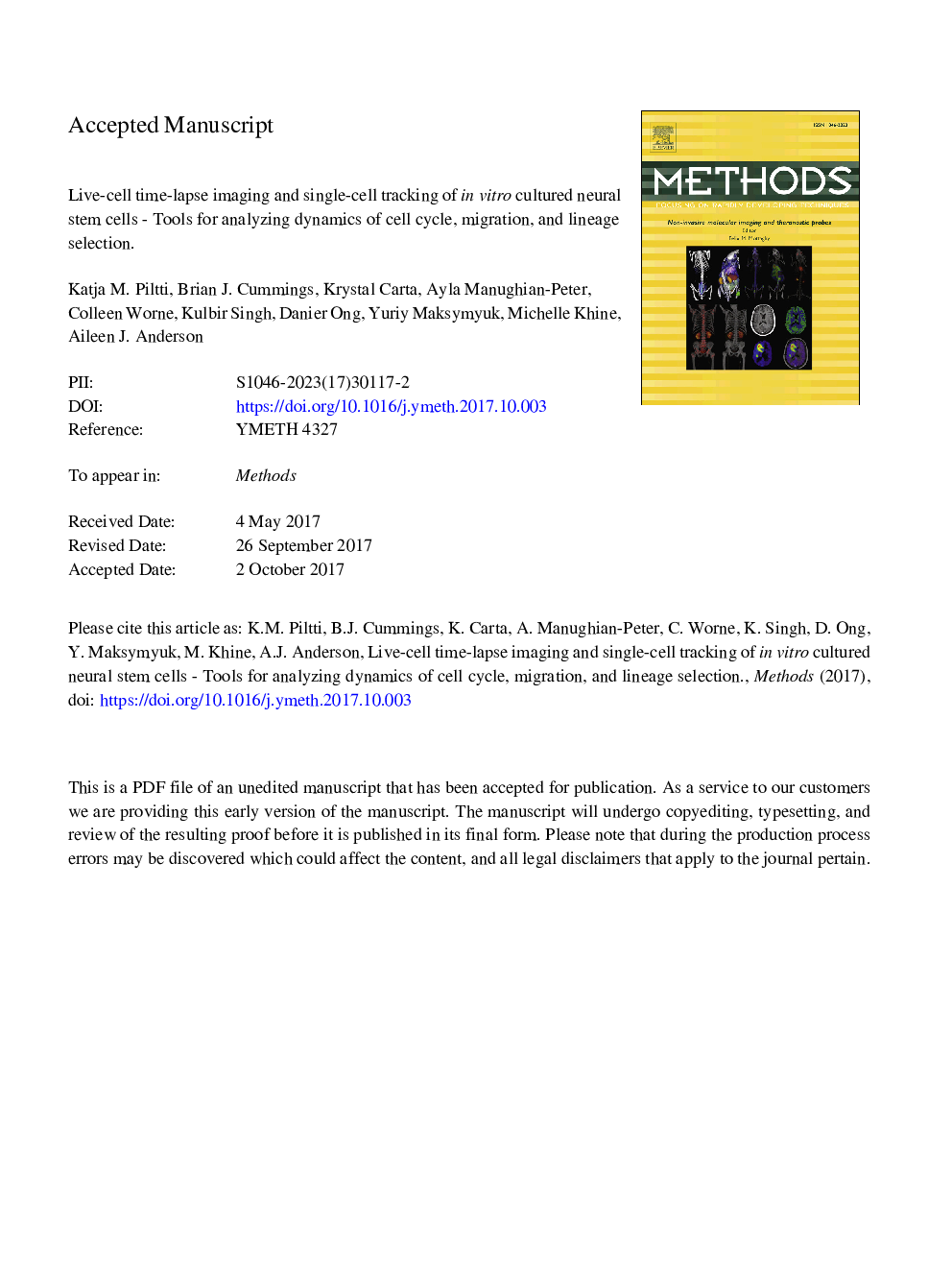| Article ID | Journal | Published Year | Pages | File Type |
|---|---|---|---|---|
| 8340142 | Methods | 2018 | 28 Pages |
Abstract
Neural stem cell (NSC) cultures have been considered technically challenging for time-lapse analysis due to high motility, photosensitivity, and growth at confluent densities. We have tested feasibility of long-term live-cell time-lapse analysis for NSC migration and differentiation studies. Here, we describe a method to study the dynamics of cell cycle, migration, and lineage selection in cultured multipotent mouse or human NSCs using single-cell tracking during a long-term, 7-14â¯day live-cell time-lapse analysis. We used in-house made PDMS inserts with five microwells on a glass coverslip petri-dish to constrain NSC into the area of acquisition during long-term live-cell imaging. In parallel, we have defined image acquisition settings for single-cell tracking of cell cycle dynamics using Fucci-reporter mouse NSC for 7â¯days as well as lineage selection and migration using human NSC for 14â¯days. Overall, we show that adjustments of live-cell analysis settings can extend the time period of single-cell tracking in mouse or human NSC from 24-72â¯h up to 7-14â¯days and potentially longer. However, we emphasize that experimental use of repeated fluorescence imaging will require careful consideration of controls during acquisition and analysis.
Related Topics
Life Sciences
Biochemistry, Genetics and Molecular Biology
Biochemistry
Authors
Katja M. Piltti, Brian J. Cummings, Krystal Carta, Ayla Manughian-Peter, Colleen L. Worne, Kulbir Singh, Danier Ong, Yuriy Maksymyuk, Michelle Khine, Aileen J. Anderson,
